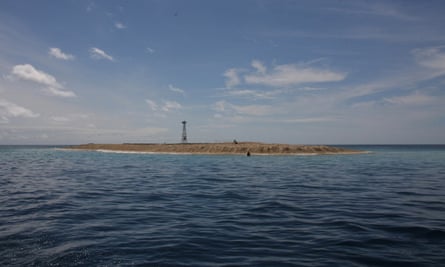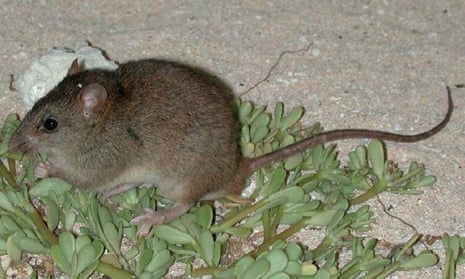The Bramble Cay melomys has become more famous in extinction than it ever was in life. A mouse-like rodent, the melomys amazingly survived on a 3.6 hectare grass-covered cay (a low-lying island in a coral reef) in Australia’s Great Barrier Reef like a ratty Robinson Crusoe for thousands of years. There, it thrived off just a few plant species until human-caused climate change—in the form of rising sea levels and increasing inundations of sea water on the low-lying island—wiped it off the planet.
But, while the extinction has been reported widely, articles have missed an important point: the scientists who uncovered the rodent’s fate had planned to capture individuals and bring them back to the Australian mainland to start a captive breeding programme. They were just too late.
“My colleagues and I were devastated,” Ian Gynther, a Senior Conservation Officer in Queensland’s Department of Environment and Heritage Protection who led the failed rescue mission, said.
“As each day of our comprehensive survey passed without revealing any trace of the animal, we became more and more depressed,” he added.
Short surveys in both 2011 and early 2014 failed to find a single Bramble Cay melomys (Melomys rubicola), but Gynther said the team was still optimistic when the left in August of 2014 believing that the failure of the two most recent surveys “was due to the limited trapping effort.”
Instead, they found the cay totally empty of its sole mammal, which was believed to have evolved in isolation from its nearest relative for nearly a million years and was considered the Great Barrier Reef’s only endemic mammal.
If they had found any survivors, Gynther said the plan was to create a captive population as “an emergency insurance measure” against extinction. Indeed, the team spent five months obtaining the necessary permissions for captive breeding from Australia’s governmental agencies and various stakeholders as well as creating a plan to hold the species at University of Queensland’s Gatton campus.

Gynther said scientists were cautious about placing the species in captivity, even though the Bramble Cay melomys had been listed by the IUCN Red List as critically endangered since 1996 and not seen by humans since 2009.
“Captive breeding is an expensive undertaking, requiring a significant commitment of staff, resources and time by the parties involved,” he explained. “This is particularly true for a program that is likely to be required for an indefinite period, as would have been the case for the Bramble Cay melomys.”
But the impacts of climate change on the cay, including repeated storm surges that killed off the melomys’ food sources like the common purslane (Portulaca oleracea), happened quicker than conservationists ever anticipated. And the last Bramble Cay melomy may have been simply swept off the island and drowned in the sea.
“By the time it was apparent that a captive breeding program was required as an urgent conservation action, it was already too late,” Gynther said.
The Bramble Cay melomys was simply gone, washed away by rising seas which now threaten the island’s seabird rookeries and sea turtle nesting beaches
The genetics of the Bramble Cay melomys may be wholly lost as well. Tissue samples were taken of 42 individuals in 1998, but the whereabouts of these samples are currently unknown, though, Gynther and his team are trying to track them down.
The loss of this little island survivor is tragically irreversible, but it could provide a number of lessons for conservationists going forward. Given that many climate change impacts are happening far quicker than scientists anticipated, conservationists may need to consider moving more speedily and aggressively to protect an increasing number of climate-vulnerable species.
“[The extinction] highlights that conservation recovery actions need to be highly responsive, especially where climate change impacts are involved,” Gynther said.
He added that controversial actions, such as assisted migration for species, must be considered as climate change continues to batter animals and ecosystems.
Of course, in an age of rising seas, more extreme weather, worsening droughts and polar ice melt, conservationists may also need to become even more vocal about dealing with the underlying cause of climate changes: burning fossil fuels. The longer global society goes without transforming itself, the more extinctions will become inevitable.
And if the loss of the Bramble Cay melomys proves anything, it’s that we may not have as much time as we think.

Comments (…)
Sign in or create your Guardian account to join the discussion